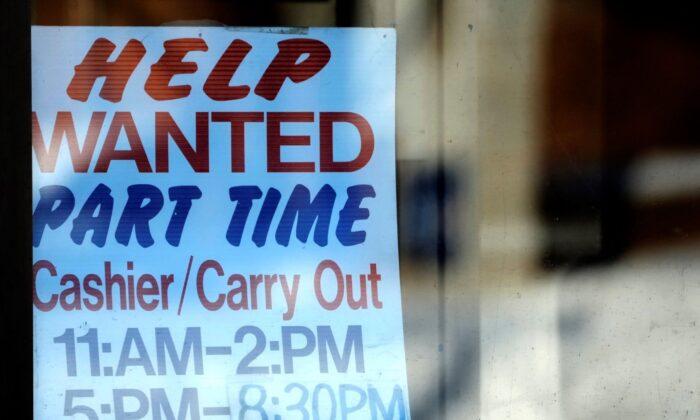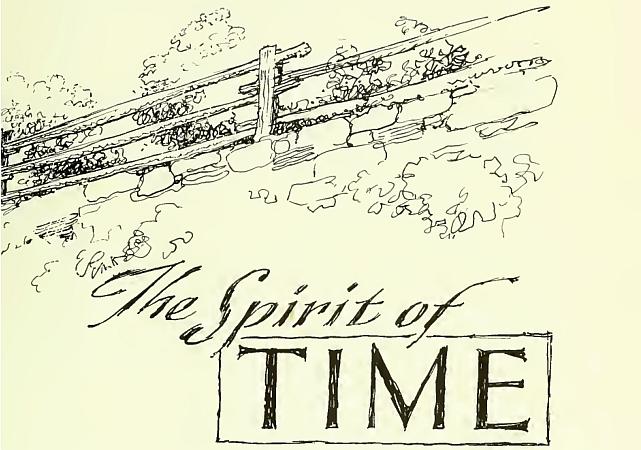This weekend, a good man who owns a landscaping business came up to the microphone during a question-and-answer period following my speech at an event. He posed a simple but sincere question. He has endless demand for his services. He has all the capital he needs. He has a thriving business with a bright future. How come he can’t get workers to actually do the work? Why is this happening?
My answer was correct, if probably too abstract. The labor markets are a mess. Vast millions are in professions to which they don’t belong. They were drawn there by capital that flowed to sectors to which it shouldn’t have. This began in 2008 with zero-interest-rate policies, which massively subsidized capital-goods-producing industries and boosted speculation in information and professional technological sectors.
Other sectors in the overall structure of production were gradually starved of both capital and labor. That greatly upset the time balance of production, pushing the focus of investors toward laptop jobs and away from hands-on work in the consumer-goods industries. The imbalance worsened as time went on but became wildly unstable during pandemic lockdowns.
Here was a period of zero interest rates plus aggressive money printing that exceeded $6 trillion in 18 months. At this point, the two classic casualties of loose money—malinvestment and monetary depreciation—colluded. Facebook (Meta), Google (Alphabet), Microsoft, Amazon, and all their associated downstream partners blew up to an unsustainable size.
The labor problem was exacerbated by controls on migration such that normal workers became hard to come by; meanwhile, millions flooded across the Southern border.
While last year and this year we started to see some rebalancing, we are nowhere near complete with this process. The companies that ballooned in size during lockdowns aren’t back where they were in 2019. The firings so far amount to a small fraction of what needs to happen to draw workers from the right side to the left side of the yield curve. That’s to say, workers need to move from do-nothing Zoom jobs in unprofitable professional ventures toward where they are desperately needed, in services and hospitality.
This signals a gigantic cultural change. An entire generation has been raised with skewed expectations about economic life. They don’t need skills. They only need a ticket to get into the door of a high-end firm and the rest takes care of itself. That’s already starting to change. Full-time employment is now leaving information tech and entering into real work in sectors focused on consumer services.
Why is it taking so long? Simply put, this amounts to a perceived downgrading of social status for millions of people. They shouldn’t care, but they do. For 15 years, they’ve been fed a steady diet of social media baloney in which status and influence are the desiderata of life itself. They know no other way. The idea of cooking, cleaning, bartending, serving tables, taking orders, doing data entry, and working in customer support is anathema; lawn care is out of the question.
As a result of these persistent imbalances, we have very strange dislocations everywhere in sight. In my neck of the woods, there are excellent restaurants with plenty of capital and customers. Their weekends are booked up even before they open. But they can’t open on Monday through Wednesday. They can’t find workers!
This isn’t normal. Labor is supposed to operate like capital, flowing to the highest-valued uses. Wages should reflect that, too. No one has to operate the economy like a machine to make this happen. The signaling systems of the market are an ongoing process that’s always pushing out inefficiencies and discoordination in favor of efficiency and coordination.
But one of those signals is the interest rate. It isn’t just a payment from lenders to borrowers. It’s a mechanism directing capital to its highest-valued uses. Without external intervention, a low interest rate should signal a buildup of savings resulting from deferred consumption and growing prosperity. That serves as a signal to invest in products that are more long term: paying returns only years down the line.
This is how the interest rate operates as an allocator not only of capital but also time. A central bank that games the system with low lending rates essentially forces savings into existence that aren’t actually there. This results in unsustainable capital-sector ventures that thrive only temporarily at the expense of consumer-goods sectors.
This scenario you can find in any industry tutorial on economics and finance, but there are many unknowns in practice. One unknown is for how long can an artificial boom persist before resources run out and the boom turns to bust? One year? Five years? We’ve just lived through the longest boom in modern history, likely dating all the way back to the turn of the millennium when central banks massively ramped up the use of their powers for political purposes.
During this whole time, we’ve mostly had low and non-painful rates of inflation. It all seemed to work, until it suddenly stopped working. That was in January 2021. Since then, we’ve experienced about a 16 percent depreciation of the dollar (in terms of its purchasing power of goods and services). This affects savings, salaries, and wages, meaning a relentless trend toward great impoverishment.
Inflation works like taxes. It’s a transfer from the public to the authorities. Even worse, as the policy has changed and interest rates have risen, federal expenditures on debt payments are rising ever higher, putting an even greater burden on taxpayers.
January’s inflation numbers looked awful across the board, confirming what many of us suspected last year. It’s embedded and not temporary. To root it out requires that the Federal Reserve continue on its present course of ever-higher rates. This is following the largest and fastest increases on record over two years. Still more is necessary to reach that terminal rate. After all, remember that they began at zero! There are few signs that the Fed will back off and call it a day, and many think that it will keep at it for the better part of a year.
Household finance is in a terrible mess. The gap between credit card debt and personal savings has never been this vast. And debt services rates are rising, too, headed toward 20 percent.
![(Data: Federal Reserve Economic Data [FRED], St. Louis Fed; Chart: Jeffrey A. Tucker)](/_next/image?url=https%3A%2F%2Fimg.theepochtimes.com%2Fassets%2Fuploads%2F2023%2F03%2F07%2F1-JAT-2023.03.07-1200x952.png&w=1200&q=75)
The implications of this for the labor sector could be monumental, the shock of a generation. My friend who asked the question is going to continue having a hard time getting hands on deck for a long time. But eventually, the rebalancing has to occur. We’ve lived through many years of wild illusions about what’s possible. Post-pandemic realities are hitting very hard and they are nowhere near done with us yet.







